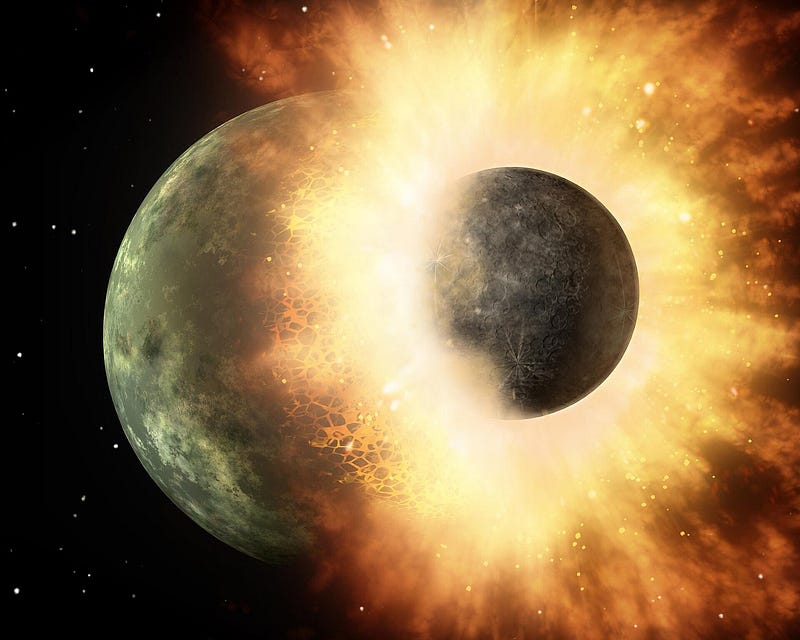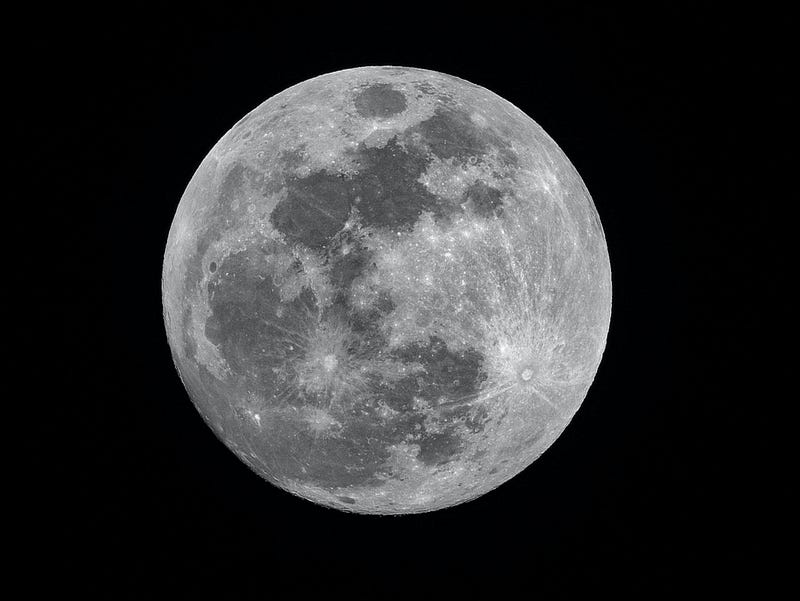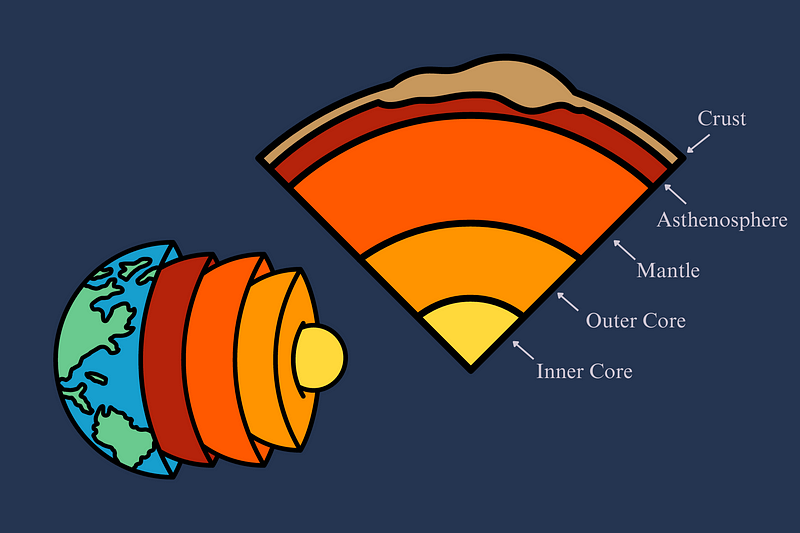Evidence of Theia: Insights into Earth's Mantle and Moon Formation
Written on
Chapter 1: The Mystery of Earth's Mantle
Recent research from the School of Earth and Space Exploration at Arizona State University has shed light on the enigmatic "blobs" found within the Earth's mantle. These large, continent-sized formations were first identified in the 1980s and are now believed to be remnants of a lost planet named Theia. This celestial body is theorized to have collided with Earth in the early solar system, resulting in the creation of our Moon.

Section 1.1: Lunar Formation Theories
Astronomers have proposed various theories regarding the Moon's origins, but one stands out among the rest. The fission theory posits that the Moon broke off from Earth due to its rapid rotation. Conversely, the co-creation theory argues that both Earth and the Moon formed simultaneously from the same materials. However, both theories have been largely dismissed, as the Moon's composition significantly differs from Earth's.
Another perspective, known as the capture theory, suggests that the Moon was an existing body that was drawn into Earth's orbit. However, capturing an object the size of the Moon presents substantial challenges, making this theory less viable.
The most accepted explanation is the giant impact theory, which claims that the Moon emerged from a collision between Earth and Theia, a Mars-sized planet. This theory is supported by evidence from Moon rock samples collected during the Apollo missions, which share similarities with Earth rocks but also reveal distinct differences, hinting at a separate origin.
After the collision, it was believed that Theia's and Earth's materials fused together, forming a single planet. However, current research indicates that Theia's remnants might still reside deep within Earth's mantle.
Section 1.2: Discovery of Mantle Blobs
In the 1980s, geophysicists utilized seismic tomography to identify significant blobs in the Earth’s mantle. This technique, akin to medical ultrasound, measures how seismic waves travel through various materials beneath the surface. Their findings revealed two enormous blobs, each towering over 100 times the height of Mount Everest. These structures, composed of rock, exhibit unique characteristics that have puzzled geologists for decades.

Chapter 2: The Role of Theia's Remnants
Recent findings published in Nature suggest that these mantle blobs could indeed be remnants of Theia following its collision with Earth approximately 4.5 billion years ago. Contrary to earlier beliefs that Theia’s remains had been entirely lost to geological processes, researchers now propose that the blobs may consist of iron-rich materials similar to those that formed the Moon.
The first video titled "How Theia, the Planet that Created the Moon, Could Also Be Hiding in Earth's Core" explores the implications of this research and the potential existence of Theia’s materials within our planet.
Arizona State University's team, led by Qian Yuan, made this revelation during a seminar on planetary formation. Yuan experienced a moment of clarity regarding the blobs' composition, prompting further investigation into how Theia's collision with Earth could have resulted in both the Moon and these intriguing mantle structures.

The researchers suggest that Theia's remnants have not been integrated into Earth's geological processes because they may have sunk deeply into the mantle during the initial impact. This iron-rich material likely settled at the base, avoiding mixing with other Earth components.
The second video titled "Collision That Formed The Moon" provides an overview of the giant impact theory and its significance in understanding the Moon's origins.
In the words of Ed Garnero from ASU, “Earth’s blobs are remnants of a planetary collision that formed our Moon. In essence, these massive blobs deep within Earth’s mantle are extraterrestrial in nature.” This research not only offers a glimpse into the past but also enhances our understanding of the solar system's formation.
By recovering signals from these deep mantle materials, scientists hope to gain insights into the early solar system's structure and composition without relying solely on current meteorite samples, which may provide misleading signals.